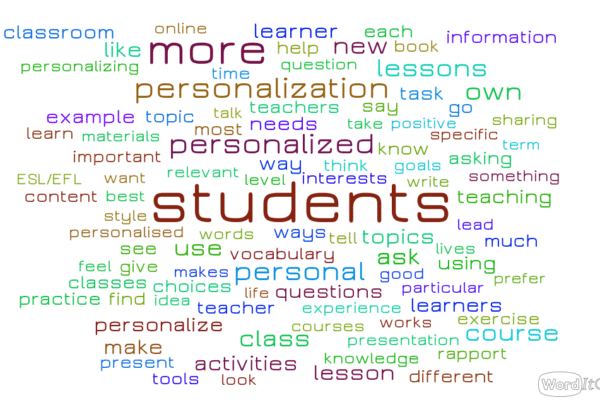Engaging learners (Part 2)
Last month, we looked at personalisation, guided discovery and raising awareness of sub-skills and strategies as ways to promote learner engagement (click here to check it out). Today, I’d like to share some more ideas on this topic, which I consider one of the most important, albeit challenging, in both lesson preparation and delivery.
Reacting to content as well as language
As teachers, we are so concerned with the learners’ linguistic development that we may easily fall into the trap of devoting exclusive attention to the words students use rather than the message they are trying to convey. Scrivener (2011:78) provides an extreme example in which the following interaction takes place:
“Student: I am feeling bad. My grandfather he die last week and I am…
Teacher: No, not ‘die’ – say ‘died’ because it’s in the past.”
Even though faux-pas such as the one described by Scrivener are rare, it is not that infrequent to see teachers asking what students think of a particular subject only to provide on-the-spot correction without even acknowledging the (often) brilliant idea behind the grammar.
Giving learners a second try
When carrying out error correction (after speaking or writing tasks), we are sometimes satisfied with pointing out what the mistake was and how it could be corrected. Mullins, Deiglmayr & Spada (2013:141), however, describe the negative effects that negative feedback may have on learners, namely reducing motivation and promoting frustration.
Providing learners with another opportunity to ‘get it right’ could help prevent those undesired effects, helping students become aware of their own performance whilst having a clear sense of progress. This can be achieved, for example, by allowing students to write second draft of their written work or by asking them to redo speaking tasks after feedback.
Paying attention to learners
Allowing ourselves to transfer the responsibility for engagement (and the blame for its absence) to learners rather than ourselves is a tantalising prospect. Often times we end up falling into the trap of simply assuming that teenagers slouch just because they are innately bored, or that our adult learners are too tired from work to pay attention to the lesson.
However, the fact of the matter is that all the slouching, fidgeting and use of mobile phones are nothing but clues that the plan you so carefully produced isn’t working for your group.
Needless to say, only teachers who read those signs and make online decisions to adapt the plan can turn the situation around and win students back. A lot can be achieved by responding immediately to such classroom contingencies (e.g. changing interaction patterns, using nomination, transforming a long reading into a jigsaw reading), but the ability to do so only comes with a broadening of your teaching repertoire and reflection upon your lessons.
Don’t be afraid to critically analyse your lessons. Don’t shiver at the thought of receiving feedback from a peer or another observer. And above all, don’t hesitate to let go of parts of your plan to ensure learners have the best classroom experience possible.
In the next post, we’ll look at how images and videos can help boost engagement levels in lessons. Stay tuned!
References:
Mullins, D., Deiglmayr, A. & Spada, H. (2013), Motivation and emotion in shaping knowledge co-construction. In Baker, M., Andriessen, J. & Järvelä, S. (eds.), Affective learning together: Social and emotional dimensions of collaborative learning. Routledge.
Scrivener, J. (2005) Learning Teaching. Macmillan Education.






